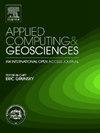Pymaginverse:一个用于全球地磁场建模的python包
IF 3.2
Q2 COMPUTER SCIENCE, INTERDISCIPLINARY APPLICATIONS
引用次数: 0
摘要
基于数据的地磁模型是绘制全球磁场、预测磁极运动、理解外核发生的复杂过程以及描述全球磁场反转表达的关键。时空插值模型种类繁多,其先验假设和方法各不相同。一种常用的建模方法是基于正则化最小二乘(RLS)球谐分析,该方法自20世纪80年代以来一直使用。该算法的第一个版本是用Fortran编写的,并启发了许多不同的研究小组用其他编程语言编写算法的版本,这些版本要么公开发布,要么只能在研究所内访问。为了开放研究领域并允许现有版本之间结果的可重复性,我们提供了这个流行算法的用户友好的开源Python版本。我们补充了这一方法,并概述了背景文献-关于麦克斯韦方程,球面谐波,三次b样条和正则化-形成了RLS地磁模型的基础。我们从文献中引入了六种空间阻尼方法和两种时间阻尼方法,以进一步平滑空间和时间上的磁场。通过采用所涉及的普通方程的带状结构并将c代码(使用Cython)用于矩阵形成,将计算资源保持在最低限度,从而实现了巨大的加速。这确保了算法可以在一台简单的笔记本电脑上执行,并且与它的Fortran前身一样快。四个教程和大量示例展示了如何使用新的轻量级和快速算法。有了这个正确记录的开源Python算法,我们打算鼓励现有和新用户使用并进一步开发该方法。本文章由计算机程序翻译,如有差异,请以英文原文为准。
Pymaginverse: A python package for global geomagnetic field modeling
Data-based geomagnetic models are key for mapping the global field, predicting the movement of magnetic poles, understanding the complex processes happening in the outer core, and describing the global expression of magnetic field reversals. There exists a wide range of models, which differ in a priori assumptions and methods for spatio-temporal interpolation. A frequently used modeling procedure is based on regularized least squares (RLS) spherical harmonic analysis, which has been used since the 1980s. The first version of this algorithm has been written in Fortran and inspired many different research groups to produce versions of the algorithm in other programming languages, either published open-access or only accessible within the institute. To open up the research field and allow for reproducibility of results between existing versions, we provide a user-friendly open-source Python version of this popular algorithm. We complement this method with an overview on background literature – concerning Maxwells equations, spherical harmonics, cubic B-Splines, and regularization – that forms the basis for RLS geomagnetic models. We included six spatial and two temporal damping methods from literature to further smooth the magnetic field in space and time. Computational resources are kept to a minimum by employing the banded structure of the normal equations involved and incorporating C-code (with Cython) for matrix formation, enabling a massive speed-up. This ensures that the algorithm can be executed on a simple laptop, and is as fast as its Fortran predecessor. Four tutorials with ample examples show how to employ the new lightweight and quick algorithm. With this properly documented open-source Python algorithm, we have the intention to encourage current and new users to employ and further develop the method.
求助全文
通过发布文献求助,成功后即可免费获取论文全文。
去求助
来源期刊

Applied Computing and Geosciences
Computer Science-General Computer Science
CiteScore
5.50
自引率
0.00%
发文量
23
审稿时长
5 weeks
 求助内容:
求助内容: 应助结果提醒方式:
应助结果提醒方式:


